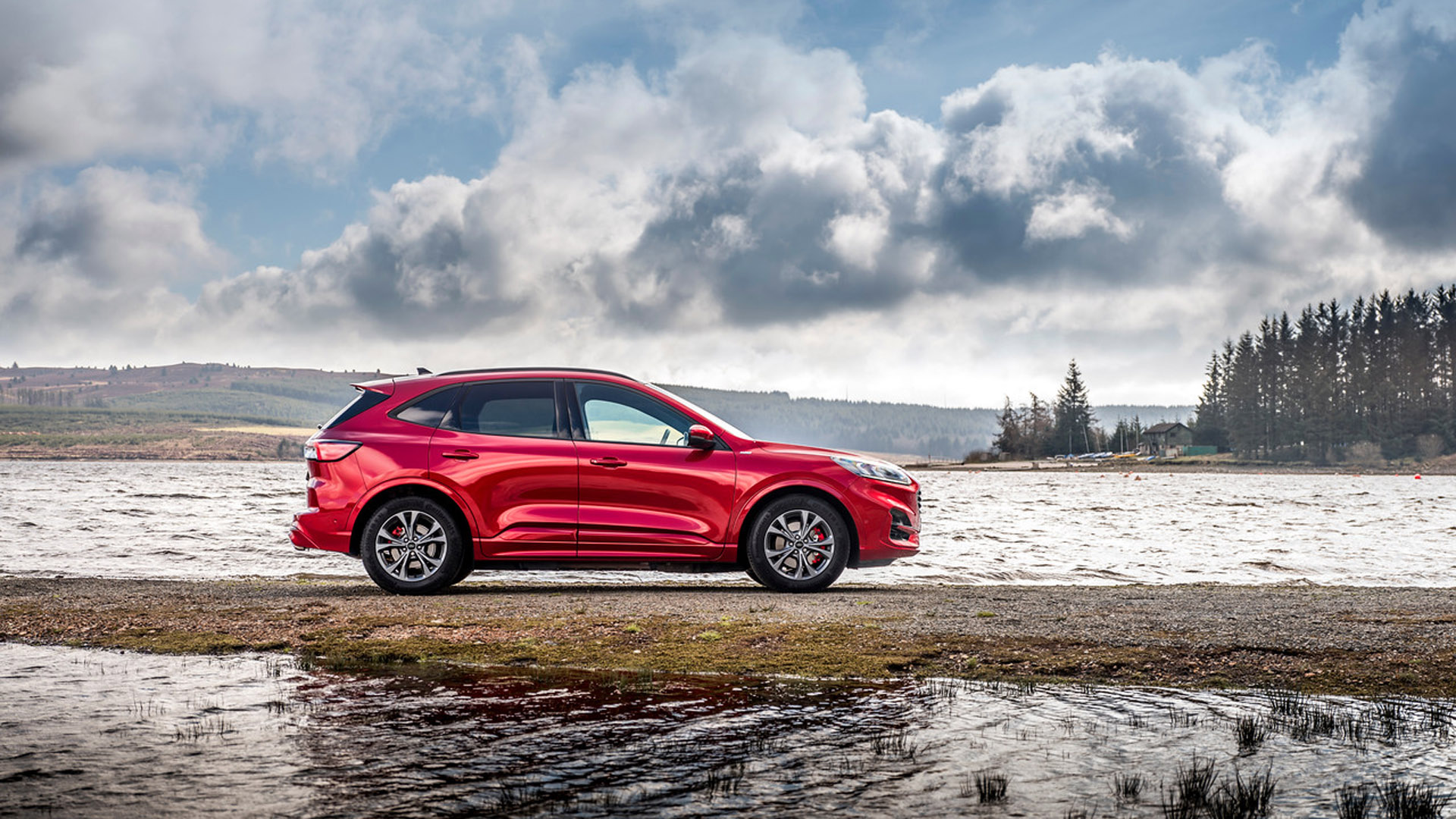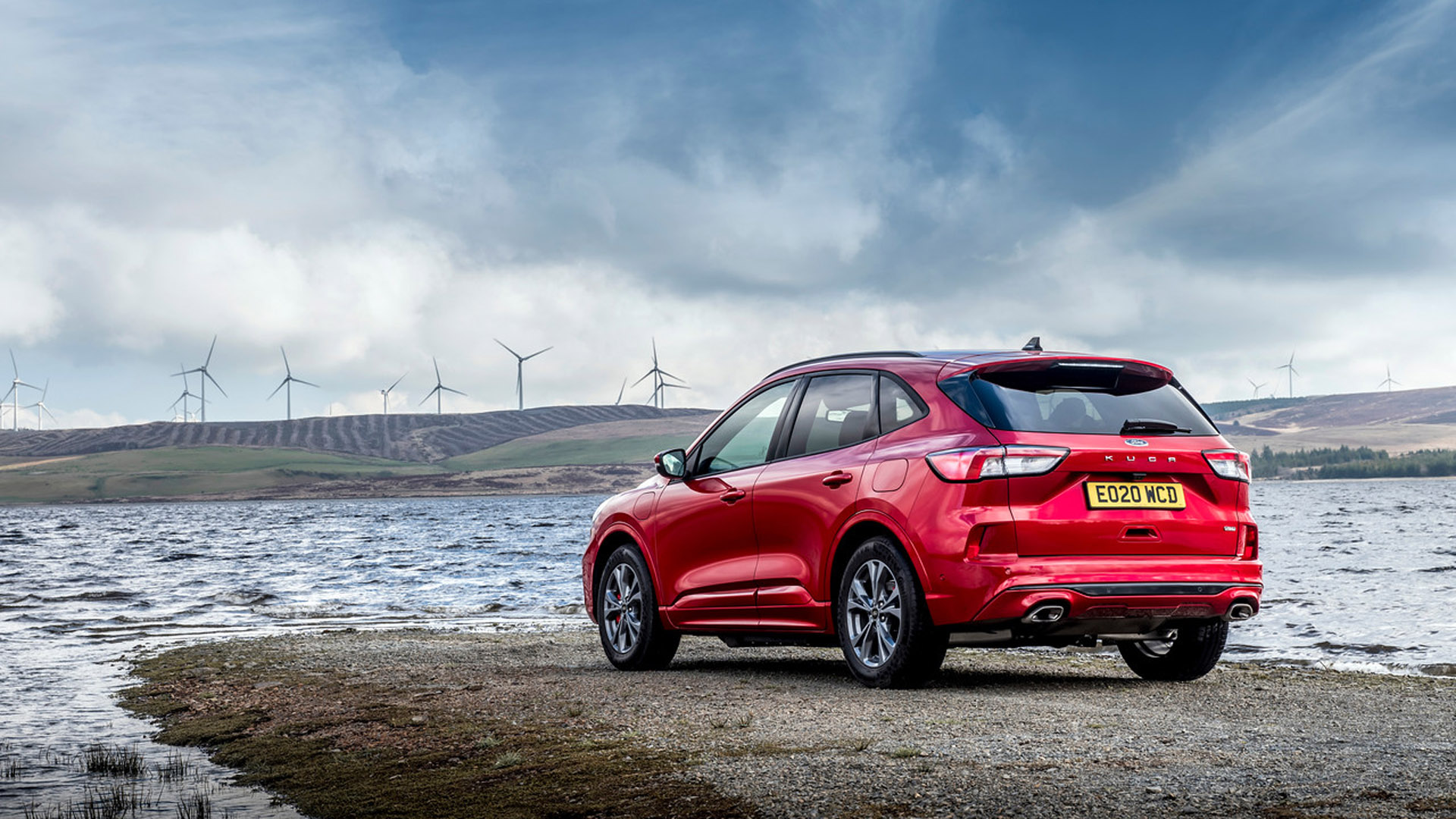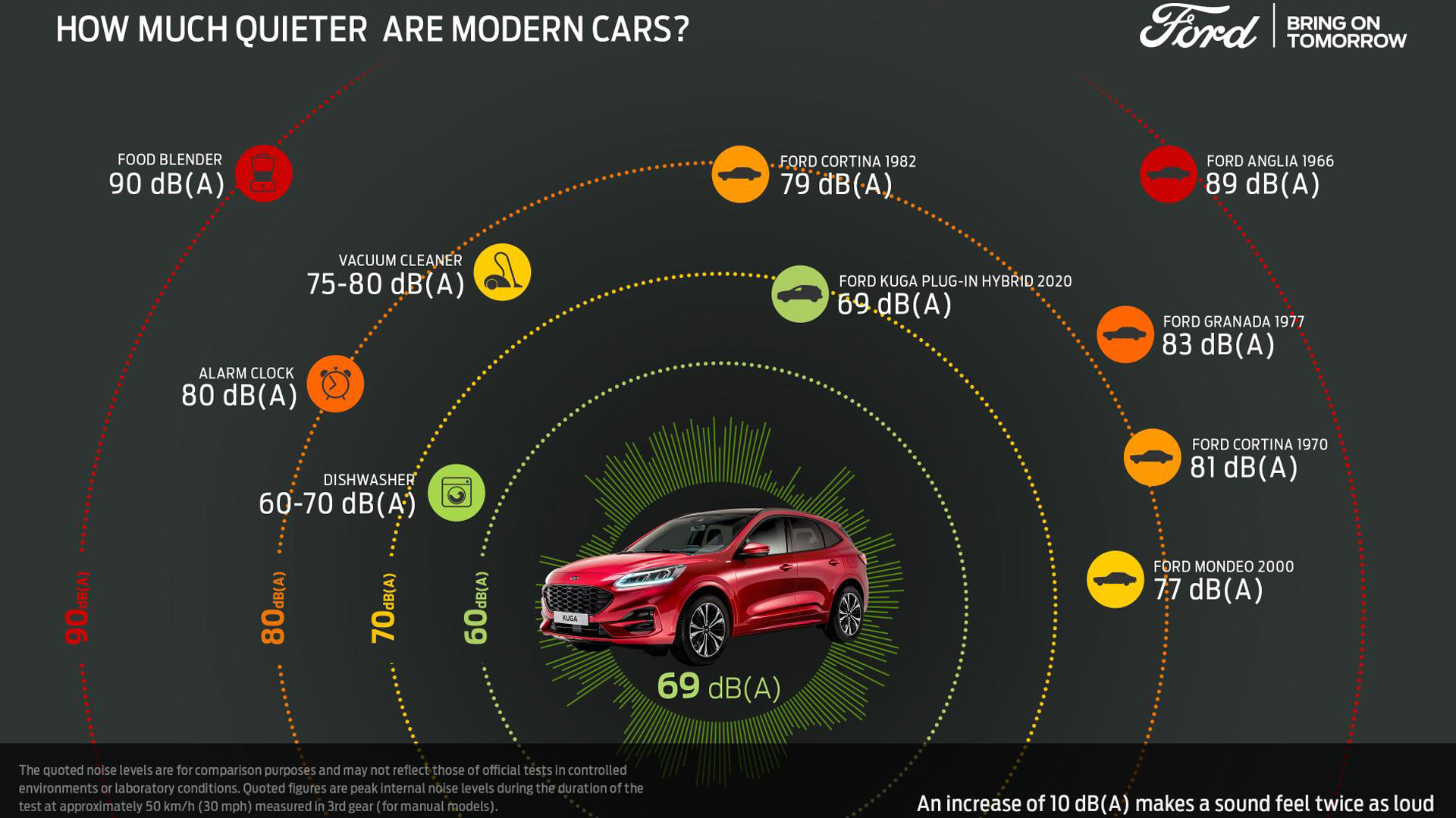Where once drivers had to shout to make themselves heard above certain speeds, modern-day cars are comparative oases of calm where conversations and music are clearly audible, even at low volumes.
Ford’s “Whisper Strategy” delivers lots of small noise improvements around the vehicle that add up to a big difference, helping make journeys more comfortable and less tiring for drivers and passengers.
Read next: What is an EV? Everything you need to know about hybrid and electric vehicles
Whisper strategy
For the new Kuga SUV, Ford examined noise‑generating elements from the suspension to the door seals to help find ways to optimise interior refinement.
Adding perforations to Kuga Vignale leather seat bolsters reduced the total area of flat surfaces inside the cabin, helping absorb rather than reflect noise. “Our ‘whisper strategy’ is designed to make journeys as quiet as they can possibly be – from absorbing sound through perforated seats to testing that involves listening carefully to the different sound patterns created by dozens of different tyres” said Glen Goold, Ford Kuga chief programme engineer.
Buy a car phone mount on Amazon (Affiliate)
Aerodynamically-tuned sound shields are added underneath the body of the vehicle that helps limit road and wind noise entering from outside.
Ford engineers spent two years testing more than 70 different tyres over surfaces from smooth Tarmac to rough concrete and cobbles, in wet and dry conditions and at a range of speeds to find the exact specification that kept road noise to a minimum while still delivering high levels of comfort and grip.
And channels behind the exterior panels that allow hidden wiring and components to pass from one area to another are smaller and narrower to limit airflow inside the body.
Read next: Government car grant for electric cars: A complete guide on the PICG
Electric refinement
The ability to drive without a petrol or diesel engine enables quieter journeys. The Kuga Plug-In Hybrid combines a petrol engine, electric motor and generator, and 14.4 kWh lithium-ion battery for zero-emission pure-electric driving capability.
Using the EV Now selectable drive mode switches off the petrol engine and powers the vehicle using battery and electric motor alone, achieving interior road noise levels of just 52 dB(A) in controlled tests – equivalent to gentle rainfall.
The Kuga Plug-In Hybrid Vignale also features Active Noise Cancellation technology. The system works just like popular noise-cancelling headphones – detecting unwanted low-frequency cabin sounds through strategically-placed microphones and counteracting them with an opposing soundwave from the B&O Sound System.
Buy a car phone mount on Amazon (Affiliate)
A generational divide
A test carried out by Ford showed that occupants in the new Ford Kuga Plug-In Hybrid experience interior noise levels that are just one-quarter of those experienced by their grandparents in a 1966 Ford Anglia.
Most people perceive one sound to be twice as loud as another one when approximately 10 decibels higher. “We had a clear vision for the Kuga from the very beginning – an approachable and sleek exterior design and an interior that provides a sanctuary space. The result is an SUV that connects with your life in a positive way” said Amko Leenarts, director, Design, Ford of Europe.
Peak internal noise at approximately 50 km/h (30 mph) measured in 3rd gear (for manual models):
| Vehicle | Max decibels dB(A) |
| 1966 Ford Anglia | 89 (89.4) |
| 1970 Ford Cortina | 81 (80.9) |
| 1977 Ford Granada | 83 (82.5) |
| 1982 Ford Cortina | 79 (78.5) |
| 2000 Ford Mondeo | 77 (77.3) |
| 2020 Ford Kuga Plug-In Hybrid | 69 (69.3) |







